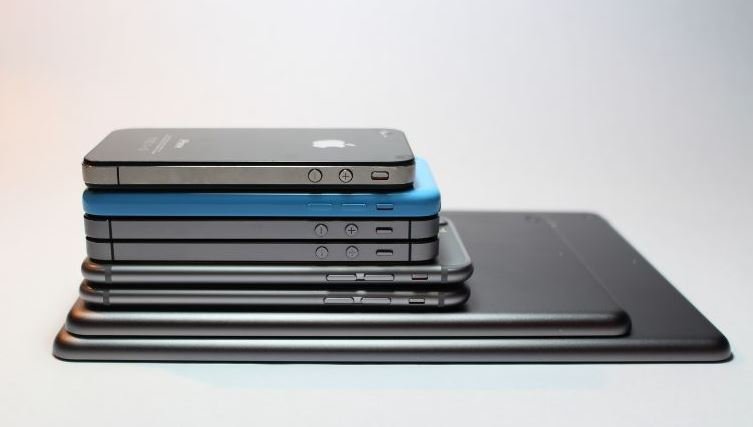Who could have imagined on January 9, 2007 as Steve Jobs unveiled a “revolutionary mobile phone” that would fundamentally reshape the technological landscape for decades to come?
The introduction of the iPhone and its slick iOS operating system sparked a mobile computing revolution. iOS enabled Apple to powerfully blend hardware, software, and services to create devices that simply felt magical to use.
Over 16 years later, iOS continues to sit at the core of Apple’s vision for the future. With over 1 billion active iPhone users today, iOS remains unmatched in its intuitive user experience and thoughtfully designed features that integrate tightly across Apple products.
Table of Contents
What is iOS?
iOS is the mobile operating system developed by Apple Inc. exclusively for its smartphones and tablets, including the iPhone, iPad, and iPod touch. It’s the software that powers these devices, providing the interface you interact with and enabling you to run apps, access the internet, manage files, and more.
The Core Design Principles Behind iOS
From the very first iPhone OS to the latest version iOS 16, Apple has steadfastly stuck to the key principles of simplicity, intuitiveness and user-friendliness in iOS design. App icons on the home screen, the slide to unlock feature, one-handed thumb access and consistent navigation paradigms across apps set the hallmarks for an operating system tailor-made for the mobile form factor.
Over time, Apple built upon these core strengths by responding to user feedback and usage patterns. For example, features like Notification Center and Control Center elegantly simply tackled increasing complexity while multitasking addressed evolving user needs. The Touch ID fingerprint scanner made security frictionless, and animations across the OS made everything feel fluid. The principles remained unchanged but the implementation continuously evolved.
Charting the Evolutionary Journey of iOS
iOS 1.0 (iPhone OS 1)
- Launched first true iOS mobile device, the iPhone, on June 29, 2007
- Introduced core elements like Home screen with app icons, slide to unlock, pinch/zoom gestures
- iOS apps exemplified principles of simplicity and user friendliness
- Web-inspired design with Safari browser
- Bundled apps like Mail, Maps set the bar for third party apps
- iPhone SDK event in March 2008 ushered in third party app store ecosystem
iOS 2: (iPhone OS 2)
- App Store: Radically simple way for developers to distribute apps
- Microsoft Exchange support expanded business appeal
- GPS and location based services laid groundwork for maps/navigation
- UI refinements added parental controls, landscape keyboard, Genius playlist recommendations
iOS 3: (iPhone OS 3)
- Cut, copy and paste!
- Introduction of Spotlight system-wide search
- First MMS and tethering support
- In-app purchases supported freemium business models
iOS 4: (iPhone OS 4)
- FaceTime video calling introduced
- Multitasking for third party apps
- Home screen folders for organization
- iBooks e-reader and iAd mobile ad platform
iOS 5: (iPhone OS 5)
- Siri voice assistant brought conversational interface
- iCloud enabled documents/data sync across devices
- Twitter system wide integration
- Notification banner alerts modernized interruptions
- iMessage replaced SMS with seamless messaging
- Camera shortcut on lock screen
iOS 6: (iPhone OS 6)
- Apple Maps replaced Google Maps
- Passbook digital wallet laid groundwork for Apple Pay
- Facebook system wide integration
- Panorama camera mode
- FaceTime over cellular introduced
iOS 7: (iPhone OS 7)
- Complete visual redesign introduced ‘flat design’
- Touch ID fingerprint sensor added biometric security
- Control Center for quick settings access
- AirDrop wireless peer-to-peer sharing
- CarPlay connected vehicles support
iOS 8: (iPhone OS 8)
- Extensibility APIs enabled widgets, sharing
- Apple Pay contactless payments
- iCloud Drive unified file access
- Health app & HealthKit framework tracked fitness & health data
- Swift language introduced
iOS 9: (iPhone OS 9)
- iPad multitasking features like Slide Over & Split View
- Night Shift adjusted color temp for better night viewing
- News app delivered personalized news curation
- Search redesigned with Google-like suggestions
- Transit directions added to Maps
iOS 10: (iPhone OS 10)
- Raising up camera from lock screen introduced
- Rich notifications became actionable
- Photos app overhaul with facial / object recognition
- Home app consolidated home automation controls
- Bedtime alarms for sleep consistency
- Tap to wake display feature
iOS 11: (iPhone OS 11)
- Introduced Control Center customization and drag-and-drop multitasking.
- Revamped Files app with iCloud Drive integration and drag-and-drop support.
- New Dock for faster app access and switching.
- Scribble feature for handwriting input on iPad.
iOS 12: (iPhone OS 12)
- Focused on performance improvements and stability.
- Introduced Screen Time app for managing device usage.
- Group FaceTime video calls for up to 32 people.
- Memoji animated avatars for expressing yourself in Messages.
iOS 13: (iPhone OS 13)
- Major redesign with Dark Mode, system-wide swipe gestures, and improved multitasking.
- Updated Photos app with organization tools and video editing features.
- Sign in with Apple for secure authentication across apps and websites.
- QuickTake video recording directly from the Camera app.
iOS 14: (iPhone OS 14)
- Introduced widgets on the Home screen for personalized information at a glance.
- App Clips for quick access to specific app features without downloading.
- Picture-in-Picture multitasking for watching videos while using other apps.
- Translate app for real-time language translation.
iOS 15: (iPhone OS 15)
- Focus mode helps manage notifications and stay focused.
- SharePlay allows synced playback and screen sharing in FaceTime calls.
- Live Text recognizes text in photos and allows interaction with it.
- Weather app with more detailed forecasts and animations.
- Wallet supports digital IDs and driver’s licenses.
iOS 16: (iPhone OS 16)
- Lock screen customization with widgets and clock styles.
- Focus filters apply Do Not Disturb to specific apps and emails.
- iMessage editing and unsend options.
- Maps with multi-stop transit routes and immersive Look Around.
- Fitness app available without an Apple Watch.
iOS 17: (iPhone OS 17)
- Introduced Live Text translation for on-device language translations.
- Shared Albums in Photos allow collaborative curation.
- Focus improvements refine notification filtering.
- Passkeys replace passwords for more secure logins.
- Stage Manager organizes open windows on iPad for improved multitasking.
Each update has brought significant improvements to functionality, design, and security, solidifying iOS as a leading mobile operating system.

Important iOS Turning Points That Shaped the Future
1. App Store (2008)
While iOS radically redefined interfaces with multitouch input, the introduction of the App Store unleashed developer creativity by reducing friction dramatically. Quality apps tailored for the iPhone experience set the gold standard. In-app payments supportive of freemium models popularized apps. Today, the App Store drives significant value via half a trillion dollars in billings and sales.
2. Siri Personal Assistant (2011)
Bringing a smart voice-activated assistant to the small screen was an impressive feat of software engineering for the times. While improvements occurred over time, Siri kickstarted the conversational interface paradigm bringing new modalities to mobile. Recently, with the shift to on-device processing Apple is reimagining how Siri will continue to evolve.
3. Touch ID fingerprint sensor (2013)
With mobile devices functioning as wallets and storing intimate data, biometrics crossed the chasm to the mainstream with Touch ID. Seamless security formed a virtuous cycle enabling password-free checkout and Apple Pay. The latest iPhones take biometrics furthest integrating secure enclave hardware tied mathematically to users.
Each turning point expanded the fabric of core capabilities in iOS while staying true to fundamental design principles. Where might iOS head next based on the compass set so far?
The Future Evolution of iOS
Given iOS’s history of reimagining possibilities, many exciting directions hold promise. Apple’s huge investments in health sensors, augmented reality and car integration indicate strong strategic intentions in these domains.
As the lines between reality and AR blur, iOS could make ambient computing interfaces mainstream. Shared AR experiences overlaid in physical spaces can become more commonplace with Apple glass AR headsets and watch / phone AR tech. Spatial audio, hand tracking gestures and foveated rendering approach human perceptual capabilities. Apps can geo locate contextual information in rich AR environments.
Health sensors already provide comprehensive health security today. As predictive capabilities improve, iOS could recommend timely interventions nudging users towards more optimal states. Granular air quality data in ambient mode detects pollutants triggering automatic air purifier adjustments. Exercise apps prescribe workout tweaks based on how the body responds. The Health app manages conditions reliably encouraging user agency in well being.
With digital car keys and automotive-grade interfaces like CarPlay, iOS is already making inroads into smart connected vehicles. Might iOS evolve into an agnostic mobility OS powering the self-driving electric vehicles of tomorrow? Handoffs could move people seamlessly across devices from home to office to recreation via integrated mobility.
What new paradigms will developers ideate to find inspiration in the building blocks provided? iOS’s past evolution inspires confidence Apple will continue redefining what’s possible in the future based on the twin beacons of simplicity and innovation.
Read: iPhone Black Screen of Death: Causes, Fixes, and Prevention




